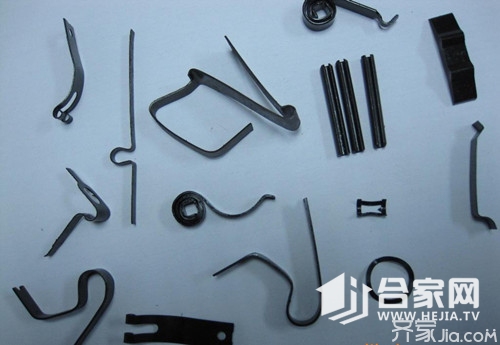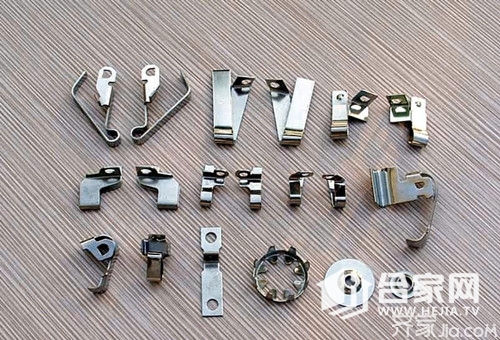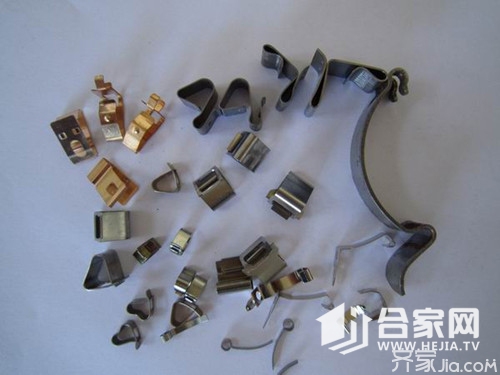Details
Your current location: Home > NEWS > Common Problem > DetailsThe production and technical requirements of spring material_decoration building materials knowledge
As we all know, spring plates are used in many different industries, and the technology of spring plates is constantly improving. Nowadays, spring plates are also very welcome in the market. Spring plates can be used under high temperature and low temperature, but at high temperature. The lower spring sheet is made of some high temperature resistant materials. Similarly, the spring sheet material used at low temperatures should have good low temperature toughness. So, do you know what the spring material is? Next, I will talk about the material of the spring in detail. Now we first understand some basic information about the spring.

What is a spring leaf
It is easy to bend in one direction, that is, the plane of minimum stiffness, but has greater tensile stiffness and bending stiffness in the other direction. Therefore, the spring leaf is mainly used in detailed positions such as sensitive components, elastic supports, positioning devices, etc. in detection instruments or automatic devices. Generally, the springs are made of phosphor bronze, tin bronze, 65mn, 55Si2Mn, 60Si2MnA, 55SiMnVB, 55SiMnMoV, 60CrMn, 60CrMnB, 302, 316 and other grades of flat steel strips.
Spring material
The spring can be selected from phosphor bronze, tin bronze, 65mn, 55Si2Mn, 60Si2MnA, 55SiMnVB, 55SiMnMoV, 60CrMn, 60CrMnB, 302, 316 and other grades of flat steel strips.
The spring sheet material that works at high temperature requires good thermal stability, resistance to relaxation or creep, resistance to oxidation, and resistance to certain medium corrosion. The working temperature of the spring sheet increases, and the elastic mode of the spring sheet material is required. The decrease in the amount of spring leads to a decrease in stiffness and a decrease in load-bearing capacity. Therefore, the spring working at high temperature must understand the rate of change (value) of the elastic modulus, and calculate the effect of the decrease in the load-bearing capacity of the spring leaf on the performance. According to the regulations of GB1239, ordinary spiral When the working temperature of the spring exceeds 60℃, the shear modulus should be corrected. The formula is: Gt=KtG where G-the elastic modulus at room temperature; Gt-the shear modulus at the working temperature t; Kt——The temperature correction coefficient is selected according to Table 2-98.

Spring leaf structure
Since there are many types of springs, I will only give examples of the most common gas springs. The basic principle is to fill the oily mixture or inert gas with a certain pressure difference from the outside atmospheric pressure, and then use the pressure difference on the cross section of the piston rod to complete the free movement of the gas spring.
The more important structure of the spring leaf, and the structure that is most prone to problems in the production process is the buzzer. The most important thing to tin on the chip is the tin on the middle positive lead. Because it is coated with ceramic powder, an electric soldering iron with too much power will burn the ceramic powder during tinning, so the tinning time must be It is short, and a good solder wire must be used at the same time, generally above 60℃. This kind of solder wire contains a large amount of tin and has better fluidity during soldering.
Spring leaf type
GB/T 1239.2-1989 cold rolled cylindrical spiral compression spring
GB/T 1239.3-1989 cold rolled cylindrical spiral torsion spring
GB/T 1239.4-1989 hot-wound cylindrical coil spring
Spring leaf action
1. The spring leaf is a kind of magical part, which can store energy, and can also absorb shock, clamp, and measure functions. Its function of storing energy is to use the energy transformed by its deformation. In a car, its role is relatively large, the seat in the car has the participation of the spring plate, and the more important clutch, accelerator, and brake in the car all have the participation of the spring plate.
2. It also has functions such as compression, stretching, and torsion. Therefore, spring sheets are also divided into compression springs, extension springs, torsion springs, etc. in life.
Technical requirements for springs
1. When the spring leaf is formed, most of it needs to be bent. But if the radius of curvature of the curved part is relatively small, then these parts will have a lot of stress.
2. There are often stepped parts and openings in the spring sheet, and stress concentration will occur at the step where the size changes sharply. The smaller the hole diameter, the larger the plate width, the greater the stress concentration factor.
3. The heat treatment requirements of the spring sheet should be put forward according to the performance requirements. The hardness after heat treatment can generally be determined between 36~52HRC.

Spring sheet production
1. Material selection. The selection of materials is a relatively important link for the production of spring plates. The material of the spring leaf is generally required to have high elastic limit, fatigue limit, impact toughness and good heat treatment performance. Therefore, the commonly used springs are made of carbon shrapnel, alloy shrapnel, stainless steel shrapnel, copper alloy and so on.
2. Production. The spring sheet can be cold-rolled and hot-rolled. Generally, the diameter of shrapnel wire is less than 8mm by cold-rolling method, and the diameter of more than 8mm is by hot-rolling method. According to the properties of the selected production materials and the production method, the springs should be made into different types according to different environments and functions.
3. Due to the different materials of some springs, after they are made by cold-rolling or hot-rolling, they must be subjected to strong pressure or shot peening, so that the effect of the springs can be maximized.
Editor's summary: There are several shapes of springs, the most common one is rectangular. Because the spring leaf has to be subjected to vibrations and long-term working conditions, such as the effect of bearing force, the requirements of the spring leaf are also very high. The fatigue limit of the spring leaf is required to be high, and the elastic limit is better. In addition to these, it must have sufficient toughness. Wait, so the process of making a spring leaf is not simple. Moreover, after the spring leaf is made, it must be scientifically tested before it can enter the market and trade.



